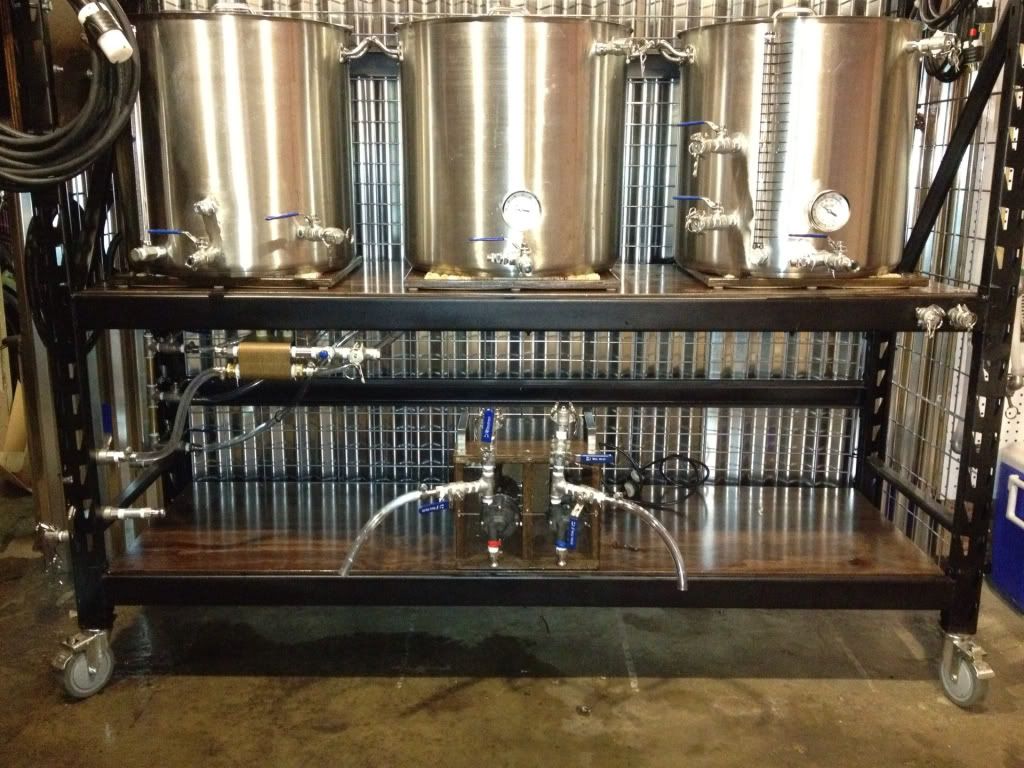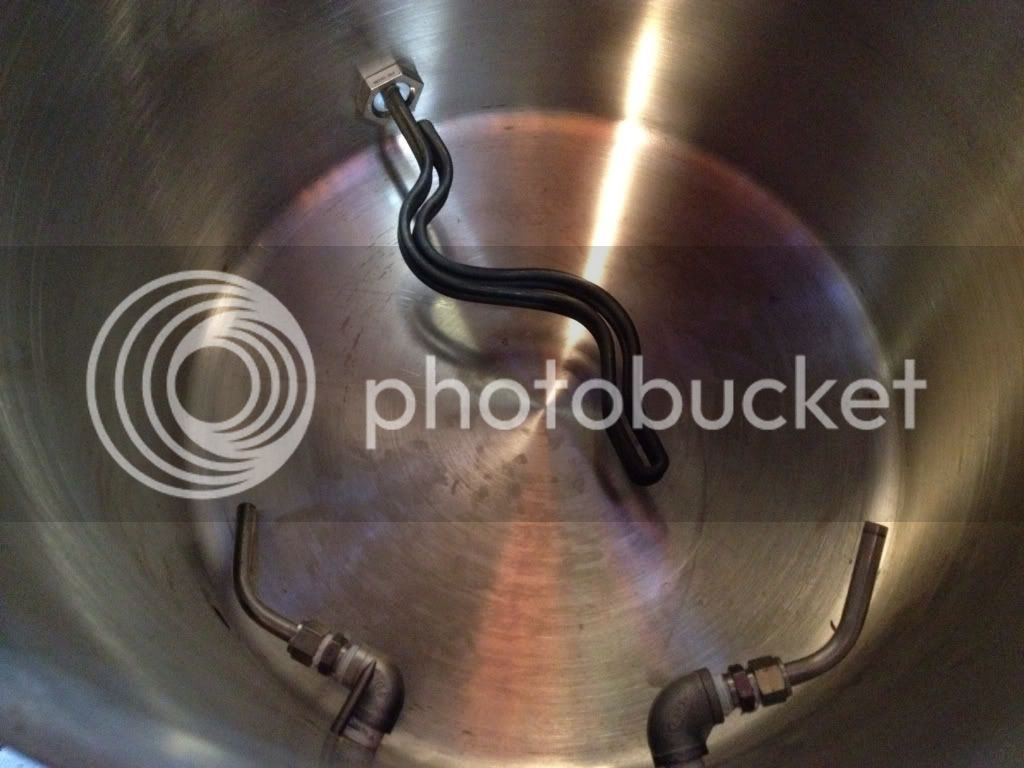Holter
Well-Known Member
I am adding a whirlpool option to my new brew kettle, but i have a question for those of you who already whirlpool with a pump. My plan is to use a couple of 90 degree elbows connected to a stainless dip tube that will direct the flow. I will pump out of the bottom outlet of my brew kettle to the top inlet.
When i first read about whirlpooling the part that i liked the most was that i would be able to chill the entire volume of beer at once, rather than only the beer that was flowing out of the kettle, leaving the remaining volume sitting idle and hot in my brew kettle.
After reading a bit more, I am starting to get confused about everyone's process. Would the following process make sense?
1. Flame Out
2. Whirlpool through Plate Chiller for 10 minutes (or until the total volume of beer reaches the desired temperature).
3. Let beer sit in the brew kettle for 10 minutes to settle.
4. pump/gravity feed beer out of the brew kettle directly into fermenters.
I think my concern is having my full volume of wort sitting idle at 68ish degrees. Normally i dont care about the wort sitting around waiting to be chilled because the temperature is so high, but if i have already chilled it am i running solid risk of contamination? I will have a lid on the kettle, FYI.
Is this similar to what everyone else is doing or are you all whirlpooling hot, letting it settle, and then passing the settled wort through the chiller?
Thanks-
Holter
When i first read about whirlpooling the part that i liked the most was that i would be able to chill the entire volume of beer at once, rather than only the beer that was flowing out of the kettle, leaving the remaining volume sitting idle and hot in my brew kettle.
After reading a bit more, I am starting to get confused about everyone's process. Would the following process make sense?
1. Flame Out
2. Whirlpool through Plate Chiller for 10 minutes (or until the total volume of beer reaches the desired temperature).
3. Let beer sit in the brew kettle for 10 minutes to settle.
4. pump/gravity feed beer out of the brew kettle directly into fermenters.
I think my concern is having my full volume of wort sitting idle at 68ish degrees. Normally i dont care about the wort sitting around waiting to be chilled because the temperature is so high, but if i have already chilled it am i running solid risk of contamination? I will have a lid on the kettle, FYI.
Is this similar to what everyone else is doing or are you all whirlpooling hot, letting it settle, and then passing the settled wort through the chiller?
Thanks-
Holter








